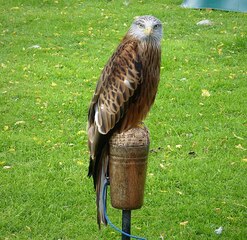 Red kite perching - gailhampshire from Cradley, Malvern, U.K, CC BY 2.0 httpscreativecommons.orglicensesby2.0, via Wikimedia Commons Red kite perching - gailhampshire from Cradley, Malvern, U.K, CC BY 2.0 httpscreativecommons.orglicensesby2.0, via Wikimedia Commons Andrew Graham's report for September's Tisbury Focus concludes with the above advice for us on how to live with the growing number of these birds that we are seeing overhead. He writes: 'The red kite is a magnificent bird of prey becoming increasingly common in this part of Wiltshire. It is unmistakeable with its rufous brown body and distinctive forked tail which it twists to use as a rudder in flight. In the 1930’s the UK population declined to two pairs which clung on mid Wales, but the species was saved from national extinction by a major protection programme. Since then, birds from Spain and Sweden have been successfully re-introduced to England and Scotland. Red Kites now breed over an expanding area of the UK and non-breeding and wintering birds may be seen across most of the country. 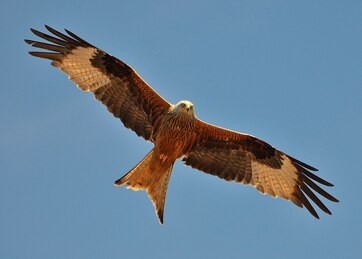 Photo: Noel Reynolds, httpscreativecommons.orglicenses via Wikimedia Commons Photo: Noel Reynolds, httpscreativecommons.orglicenses via Wikimedia Commons 'The birds we will see are almost certainly part of the expanding reintroduced population rather than from the surviving native population in Wales. Males and females are essentially similar but in bright sunshine their strongly marked plumage is striking. The white primary feathers of the wing contrast with black wingtips, the yellow beak and eye stand out against the grey head while, in the right light, the tail may look positively orange. Its call is like but distinct from that of the buzzard – less mewling and more quavering - and will often be heard when several birds are together. Indeed, as numbers of birds in an area starts to grow, they may gather in communal woodland roosts where they can be seen dropping in from the surrounding countryside at dusk. 'They were common birds of the town in Shakespearean times where they lived on carrion and offal and served an important role in clearing up human waste. When birdwatching in Europe, rubbish dumps were often a good place to find them. Their diet remains mostly carrion, roadkill and worms which they can often be seen collecting in recently ploughed fields. As scavengers, they are particularly prone to poisoning from illegal poisoned baits and pesticides. They will occasionally take small mammals given the chance and will gather around harvesting operations on the lookout for a meal. 'Red kites nest in woodland in a scruffy nest often on top of an old crow’s nest. They hunt widely over mixed countryside, wooded valleys, and pasture, will stray over towns and can be see flying over Tisbury on occasion. Urban areas near the successful reintroduction in the Chilterns now regularly see numerous (double figures) kites overhead. This is partly because people took to putting out scraps to attract this impressive bird to close quarters. Unfortunately, this has resulted in a developing problem akin to that of herring gulls at seaside resorts where emboldened birds, used to being fed, start to pinch food from humans. This can be very alarming for children, so such feeding is not recommended. Nothing like that has been reported hereabouts so hopefully we can enjoy more views of this handsome bird in years to come without encouraging them to become a pest. Then our summer lunches won’t be subject to the warning: “red kite in the morning; put out the awning”. 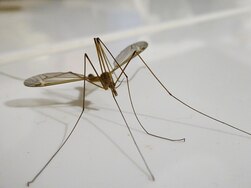 Photo: Joachim Lutz, CC BY-SA 3.0 via Wikimedia Commons Photo: Joachim Lutz, CC BY-SA 3.0 via Wikimedia Commons August alert Rooks and jackdaws seem to have had a very successful breeding season with the roost in the beech trees off Vicarage road containing thousands of noisy birds. At this time of year, they can be a nuisance on ripening cereals but for most of the year they are beneficial. Andrew Graham tells us about one of their favourite foods: ‘Leatherjackets in our lawns are favourite foods for starlings which often feed in our lawns. 'They are commonly seen in our gardens and make a nuisance of themselves by coming into houses where they seem to bump around the walls in an aimless and slightly sinister fashion. They are largely nocturnal and as they are attracted to light they will come in through open windows in the evening. With large translucent wings and long gangly legs, they can be quite disturbing especially to people who do not like insects. They are sometimes be confused with spiders or giant mosquitoes. Alarmingly, if you try to do the right thing and catch them to release outside their legs often drop off in your hand. However, they do not bite are generally harmless and are not to be feared. However, although the larvae of most species feed on decaying organic matter so playing an innocent part in nutrient recycling, a couple of species are agricultural pests and can seriously affect our lawns. 'When the adults emerge in late summer they may do so in large numbers and then after mating, as they only live a few days, they die in similarly large numbers. 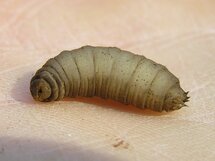 Leatherjacket grub Beentree, CC BY-SA 3.0 via Wikimedia Commons Leatherjacket grub Beentree, CC BY-SA 3.0 via Wikimedia Commons 'After mating, the females lay their eggs amongst grass, and these develop into the rather unpleasant looking grey grubs we call leatherjackets. A damp autumn helps these eggs and larvae to survive in greater numbers. These live underground feeding on grass roots or emerging at night to chew on stems. A serious infestation can create areas of poorly growing or dead grass. But on the positive side they do provide food for starling, rooks, crows, and magpies.’ Comments are closed.
|
Photo: Avocets (Izzy Fry)
The headers display photos taken by our members. Do get in touch via the Contact Form if you'd like to submit a photo for selection.
Archives
May 2024
Categories
All
|
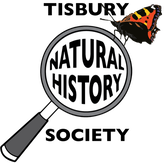
 RSS Feed
RSS Feed